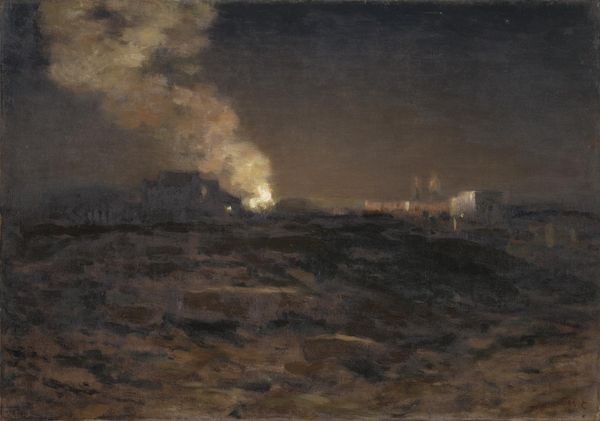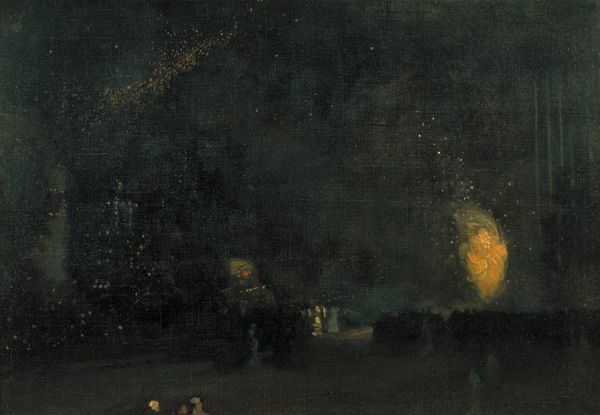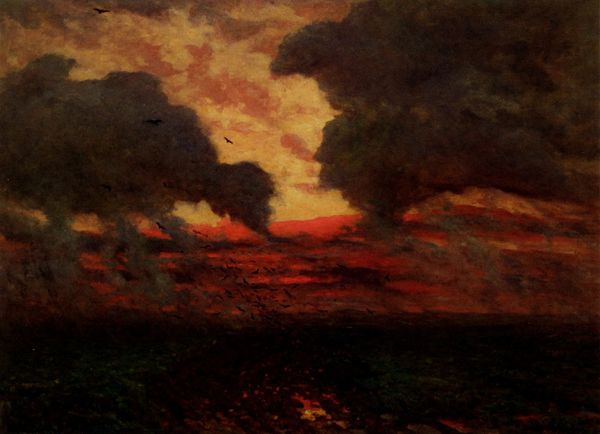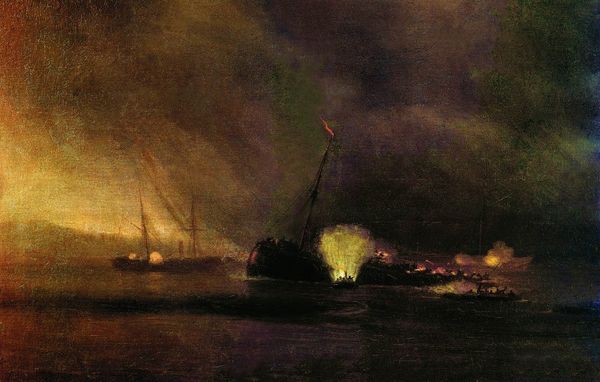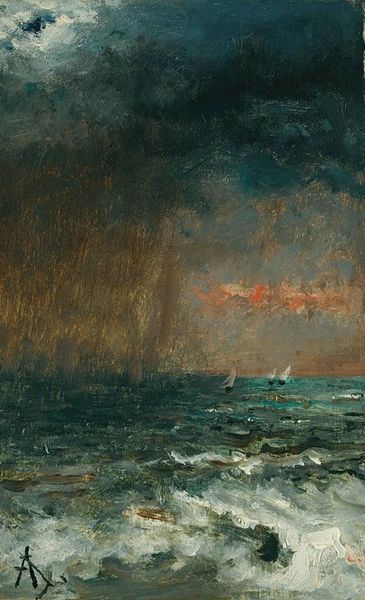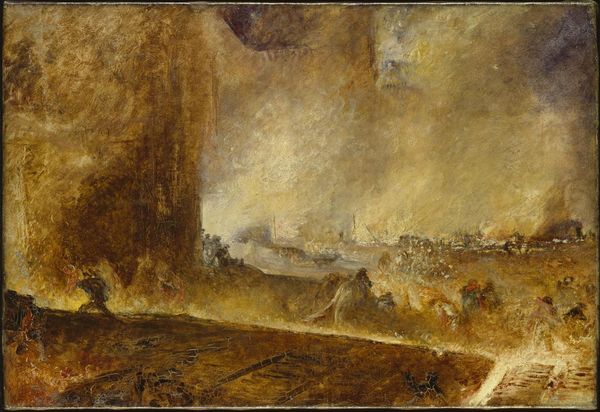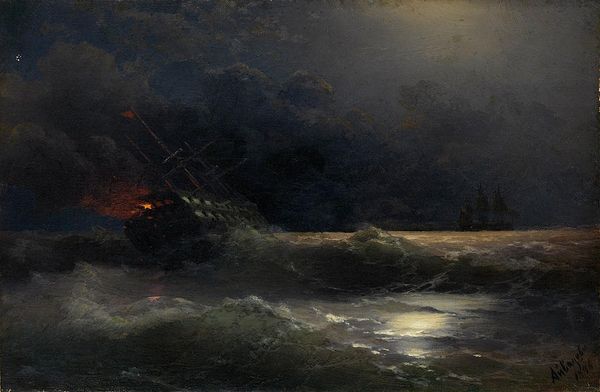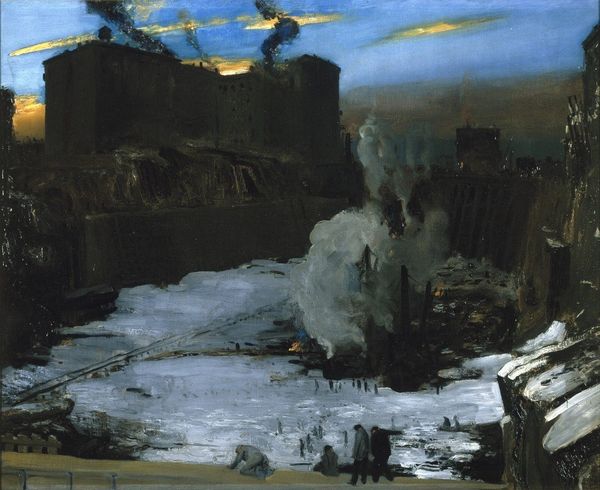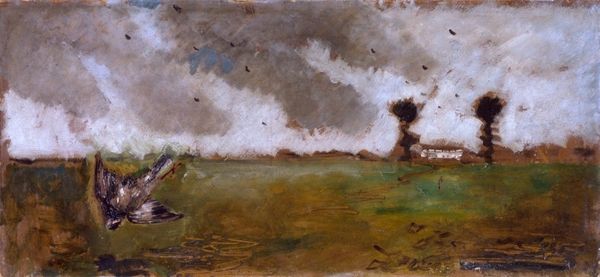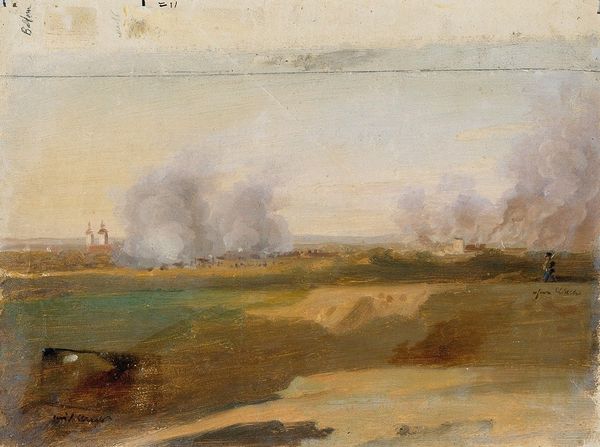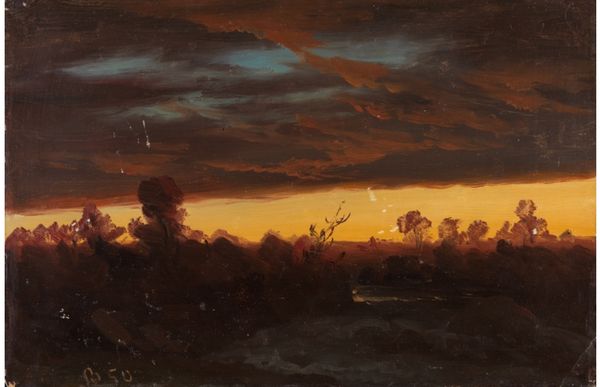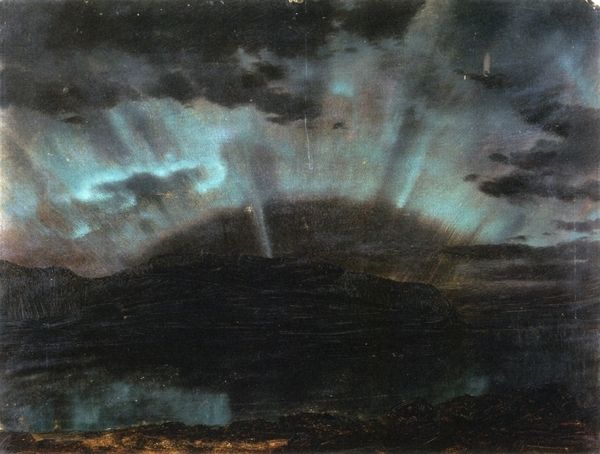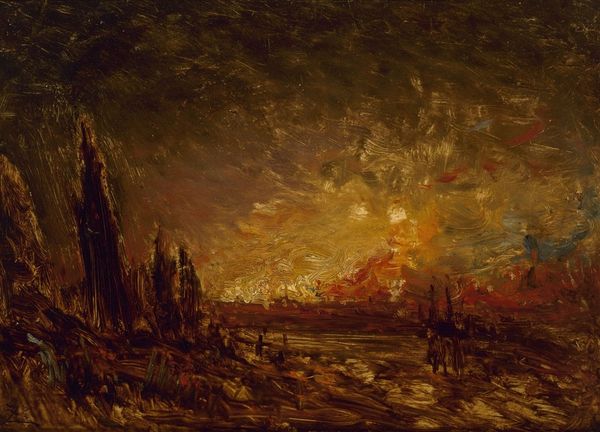
painting, oil-paint
#
painting
#
oil-paint
#
landscape
#
ashcan-school
#
cityscape
#
modernism
#
realism
Dimensions: 77.15 x 92.08 cm
Copyright: Public domain
Curator: Looking at George Luks' "Roundhouse at High Bridge" from 1910, one is immediately struck by the sheer scale of industrial presence juxtaposed with nature's landscape. It’s an oil painting. What are your first thoughts? Editor: Wow, it's…intense. The towering plumes of smoke are practically swallowing the sky. It feels melancholic but also strangely powerful, as if the city is breathing fire. Curator: Absolutely! Luks, with his Ashcan School sensibilities, wasn’t afraid to portray the grittier sides of urban life. The way he layers the paint gives the smoke a tangible weight. Semiotically, the image could be viewed as modernity's forceful encroachment, right? The darkness in the structure dominates and almost threatens to push back the horizon! Editor: Right, and the way the light catches the edges of the smoke creates this beautiful contrast. Almost as though he found a weird kind of beauty in the pollution itself, you know? It speaks to that moment in history when progress, even when grimy, still meant promise. He found beauty and painted it. Curator: Precisely! And the composition, notice how the curve of the river leads your eye from the roundhouse itself, through the industrial chaos, out towards the delicate bridge in the distance. It’s almost like he’s creating a narrative, a journey from the source of industry towards a distant, perhaps idealized, vision of the city. The brushwork shows some influences of modernism even! Editor: And it's all so hazy, softened. It's easy to imagine being there, right then. You almost expect to hear the steam whistles echoing through the sky! It's quite atmospheric. He does well capturing this landscape which almost certainly would be condemned. Curator: A key point. "Condemned" carries significant weight now, with our understanding of environmental impact, but back then, maybe this industrial heartland hummed with potential for something new. A tension Luks so masterfully captures. Editor: Well, seeing it through these new eyes, it’s not just a historical snapshot. It's like he knew we'd be looking back, questioning, reflecting on where we've come from. Curator: Yes. The painting doesn't settle, does it? It invites us to wrestle with our own relationship to progress, pollution, and beauty—a timeless dilemma, painted in hues of smoke and promise.
Comments
No comments
Be the first to comment and join the conversation on the ultimate creative platform.
